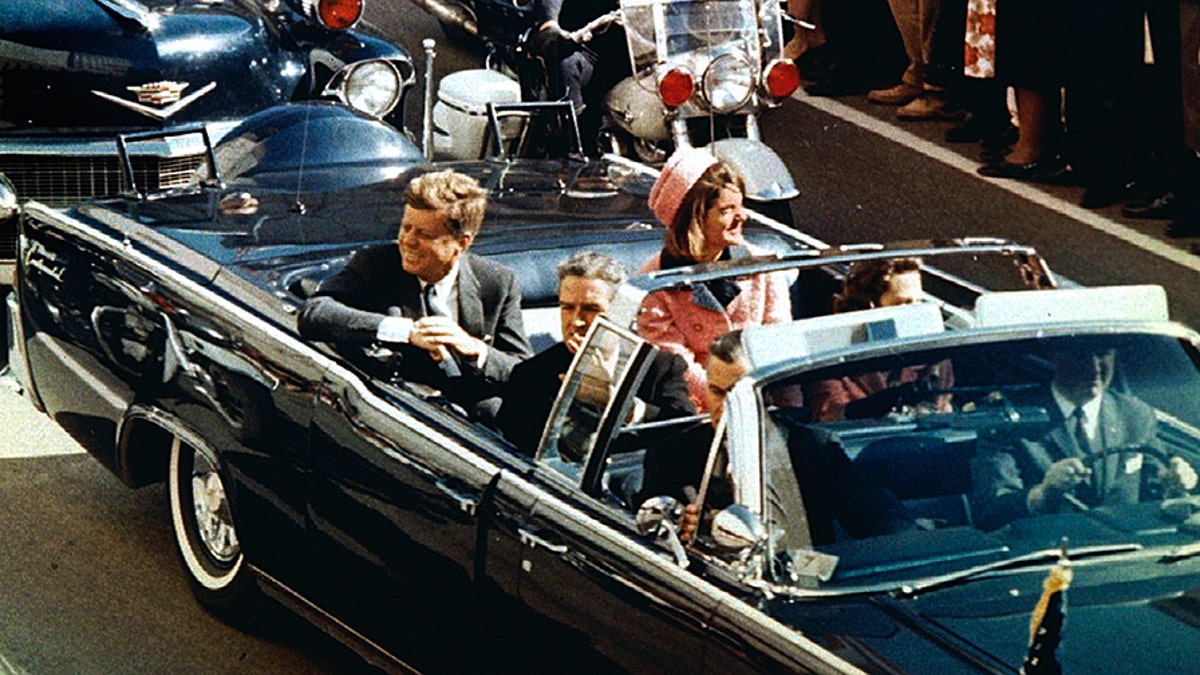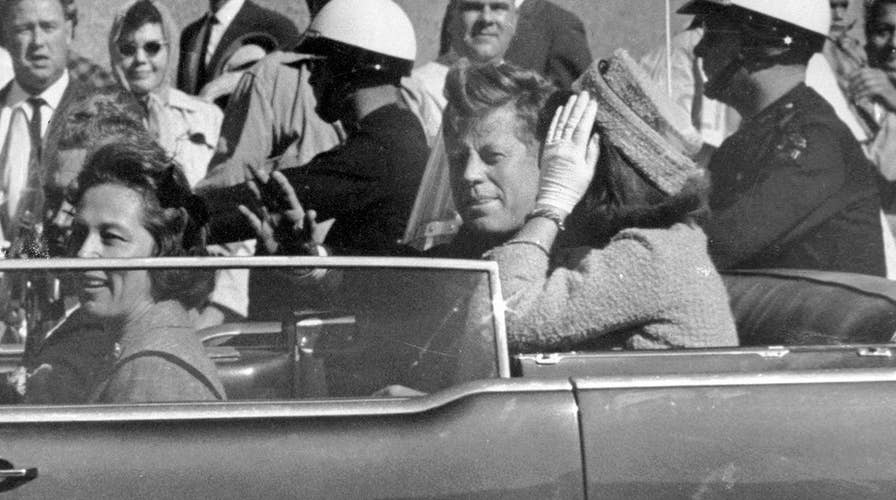What will the public learn from the classified JFK files?
Assassination researchers hope to learn more about Lee Harvey Oswald and undercover CIA officer George Joannides; James Rosen takes a closer look for 'Special Report.'
After more than 50 years of conspiracy theories and speculation, the remaining hidden documents detailing the assassination of President John F. Kennedy are set to be released Thursday.
Under the President John F. Kennedy Assassination Records Collection Act, the government is required to release the final batch of files on the assassination, which happened in Dallas on Nov. 22, 1963. These secret files have long fueled rumors and speculation that gunman Lee Harvey Oswald wasn’t the only person involved in Kennedy’s murder.
Almost immediately after the Warren Commission in 1964 ruled that Oswald had been the lone gunman, conspiracy theories began to circulate over whether or not he had been the only shooter and if the CIA had been involved in the Kennedy assassination.
But before authorities were able to fully question Oswald, the former U.S. Marine was shot and killed on Nov. 24, 1963, by Texas nightclub owner Jack Ruby – adding more fuel to the speculative fire that the U.S. government was hiding what it knew about the assassination.
The subsequent report by the Warren Commission, which was established by President Lyndon B. Johnson, did little to quell either the rumors that Oswald was killed to cover up a government conspiracy or the doubts that a lonely, alienated gunman could have fired such accurate and rapid shots.
The 1992 act, which was signed by President George H.W. Bush and required the government to release the remaining documents within 25 years’ time, also stipulated that the president is the only person who can stop any of the documents from being released.

FILE PHOTO 22NOV63- President and Mrs. John F. Kennedy, and Texas Governor John Connally ride through Dallas moments before Kennedy was assassinated, November 22, 1963 - PBEAHUNGRBG
President Trump has so far been coy about how many of the 3,100 files – comprising hundreds of thousands of pages – he will make public. On Wednesday, Trump tweeted: "The long anticipated release of the #JFKFiles will take place tomorrow. So interesting!"
About 30,000 files have previously been released, albeit with heavy redactions, and the National Archives will post the newly released files on its website.
The CIA hasn’t openly said it is counseling Trump to use restraint when deciding what to release and what to withhold, but there is speculation that the intelligence agency wants some materials kept secret -- especially documents generated in the 1990s that are believed to contain the names of people who are still alive.
The chances are slim that the documents will contain any bombshell revelations, especially in regards to questions over whether anyone except Oswald was involved in the killing, but they could reveal some details about the shooter’s mysterious six-day trip to Mexico City right before the assassination.
Oswald said he was visiting the Cuban and Soviet Union embassies there to get visas, but much about his time there remains unknown.
Judge John Tunheim of Minnesota, who led the independent board that reviewed and released thousands of the assassination documents in the 1990s, told The Associated Press that the new papers could detail the arrangements the U.S. entered into with the Mexican government that allowed it to have close surveillance of those and other embassies.
Other files that scholars hope will be released in full include an internal CIA document on its Mexico City station, and a report on Oswald's trip from staffers of the House committee that investigated the assassination.
Scholars also will be looking for any mention – or lack thereof – of Trump’s campaign trail assertion that the father of GOP rival Ted Cruz had been photographed with Oswald before the shooting.
The Associated Press contributed to this report.





